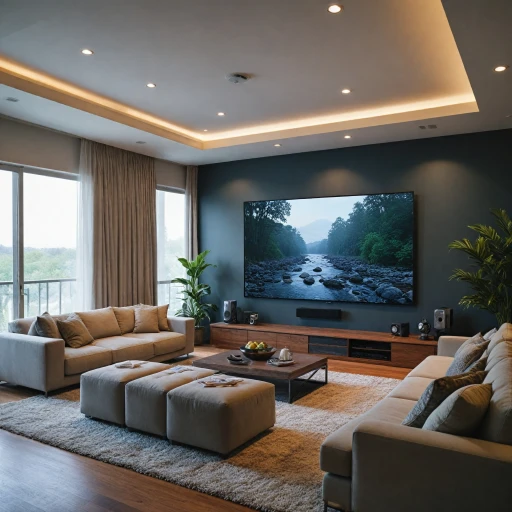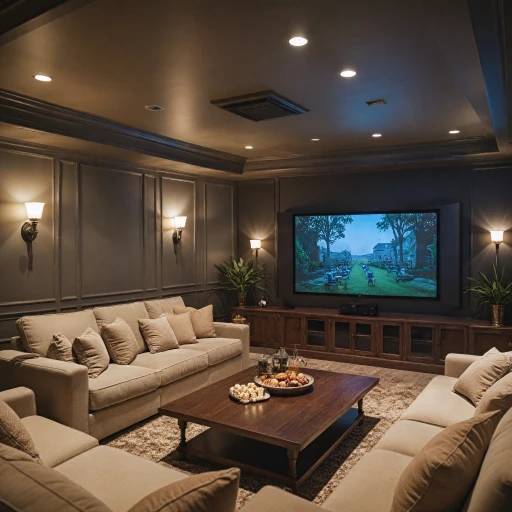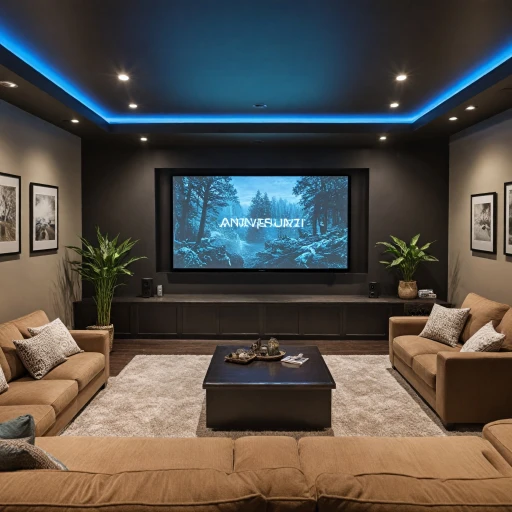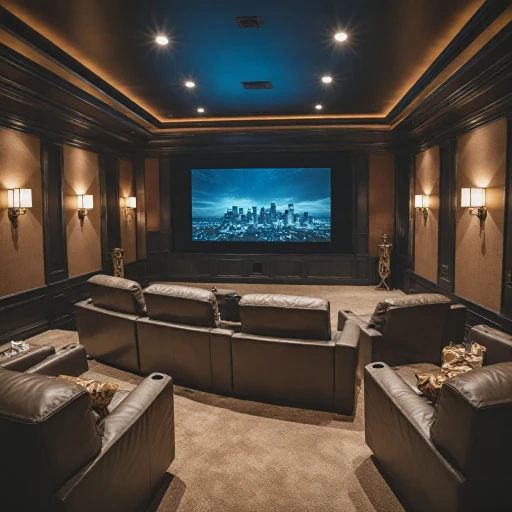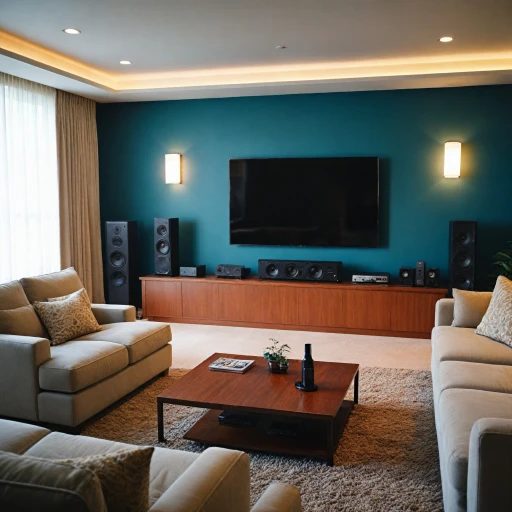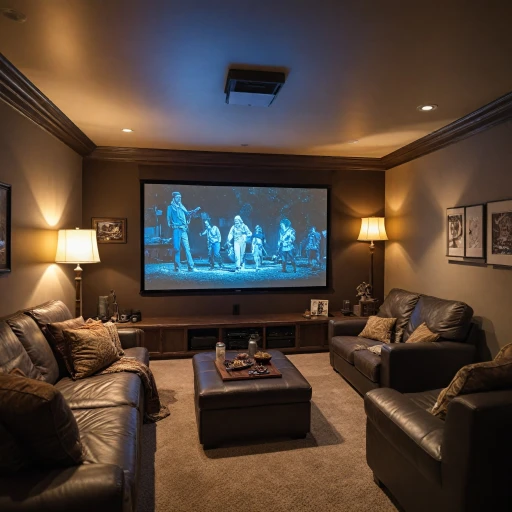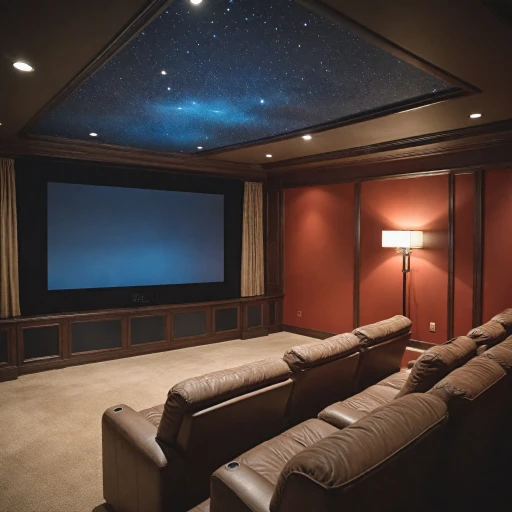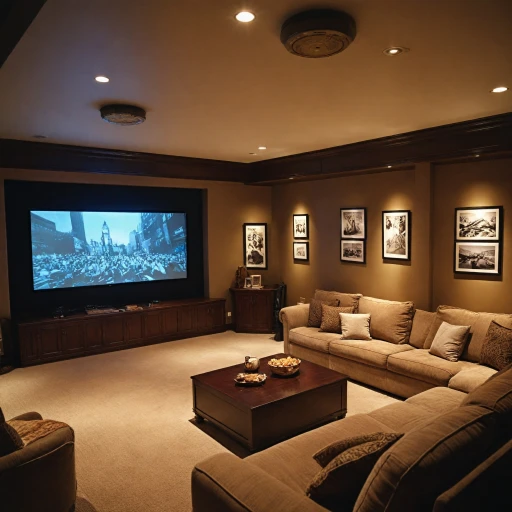Understanding the Benefits of a Ceiling-Mounted Projector
Unleashing the Potential of a Ceiling-Mounted Projector
Investing in a ceiling-mounted projector can significantly elevate your viewing experience, transforming a regular room into a cinema-like environment. Ceiling-mounted setups are increasingly popular due to the myriad of benefits they offer, especially when it comes to enhancing your home theater system.- Space Efficiency: A ceiling mount conveniently positions your projector above your space, freeing up valuable floor and wall space. This arrangement keeps your home theater clean and organized while optimizing the throw distance for a larger, more immersive projection.
- Optimal Viewing Angles: Mounting the projector on the ceiling allows for the perfect alignment with your projection screen. This minimizes image distortion and ensures every corner of your screen receives crisp, clear visuals. The ability to adjust the lens shift further ensures the ideal setup for any room configuration.
- Enhanced Aesthetic Appeal: Ceiling mounts keep the projector out of sight and out of the way, preserving the sleek look of your home theater. Unlike bulky projector stands, a mounted projector maintains an unobtrusive presence, complementing any decor style.
- Reduced Clutter: Keeping the projector out of reach on the ceiling means fewer cords and accessories cluttering your space. This not only creates a neat environment but also reduces the risk of accidental damage.
- Comprehensive Viewing Experience: To perfect the setup, pairing your ceiling-mounted projector with a dedicated projection screen ensures the best image quality. A quality screen, with the right projector mounts, complements the projector's capabilities, enhancing the overall theater experience.
Key Features to Look for in a Mountable Projector
Must-Have Features for Your Home Theater
When selecting a ceiling-mounted projector for your home theater, several key features will determine just how well the product will serve your needs. Considering these attributes will help you ensure an optimal viewing experience that is on par with other entertainment methods.
- Throw Distance: Understand the projection distance that your projector requires. This is the space needed between the projector lens and the screen. A shorter throw distance might be desirable if your room is smaller, while a longer throw might be necessary for larger spaces.
- Resolution and Image Quality: The resolution significantly impacts image clarity and detail. Go for at least a Full HD resolution, but 4K is recommended if you seek a top-tier experience. This ensures your movies or presentations appear crystal clear on the screen and can justify the projector's price.
- Lumens: The brightness of a projector, measured in lumens, dictates how well the image appears in various lighting conditions. Higher lumens mean the projector can combat ambient light better, making it essential for rooms without complete control over lighting.
- Lens Shift: This feature allows for image adjustment without physically altering the projector's position. It's especially useful if your projector mounts are fixed in spots that don't perfectly align with your intended screen area.
- Portability and Weight: Even if you're ceiling-mounting, the initial setup or any adjustments will require handling the projector. A projector under a certain weight limit (usually around 10 lbs) simplifies the installation process.
- Connectivity: Confirm the projector supports multiple connection types (HDMI, USB, etc.), especially if you plan on streaming directly or connecting different media devices. This improves versatility and future-proofs your investment.
- Flexibility in Mounting Options: The right mounting solution can make a difference. Consider projectors that provide adaptable mounting options like ceiling, wall, or portable stands, depending on your space and preferences.
With these factors in mind, you're well on your way to maximizing your home theater setup's potential. It's advisable to conduct thorough research and perhaps refer to this insightful guide for more in-depth advice tailored to your specific needs. Each of these features plays a significant role in the overall quality and experience you'll receive from your mounted projector.
Installation Tips for Ceiling-Mounted Projectors
Seamless Ceiling Installation for Optimal Viewing
Installing a ceiling-mounted projector requires careful planning and precise execution to ensure the best results. Here are essential tips to guide you through the installation process:- Choose the Right Location: Start by selecting an optimal location on the ceiling that aligns well with your projection screen. The distance, known as the throw distance, between the projector and the screen plays a crucial role in image clarity. Ensure it meets the specifications mentioned in the product manual to avoid distorted images.
- Secure a Stable Ceiling Mount: The projector ceiling mount must be securely anchored to support the weight of the projector. Consider the weight (lbs) specification of your projector and compare it with the mount's capacity. Properly securing the mount minimizes vibrations and enhances the stability of the image.
- Properly Align the Projector: Aligning the projector involves setting the correct angle and position to ensure the image fills the projector screen accurately. Make use of lens shift features to fine-tune the alignment without the need for excessive physical adjustments.
- Check Connectivity: Before finalizing the mount, check all necessary connections, including HDMI cables and power supply. Ensure effortless access to ports for ongoing maintenance.
- Attention to Detail and Safety Measures: While installing, pay close attention to safety protocols such as using suitable tools, wearing protective gear, and checking that the ceiling structure can handle additional weight.
Common Challenges and How to Overcome Them
Overcoming Mounting Challenges
Installing a ceiling-mounted projector for your home theater can elevate your viewing experience, but it's not without its hurdles. Here are some common challenges and how to overcome them:- Correct Mounting Distance: Determining the right throw distance is crucial. A miscalculated projector placement can result in a distorted image size that doesn't fit the screen. Refer to your projector's manual to identify the ideal throw distance, ensuring your picture will be both clear and correctly scaled. If the throw is too short, consider lens shift features or an alternative ceiling mount.
- Supporting the Weight: Ceiling mounts need to support the weight of the projector. Typically measured in lbs, check the projector specifications and ensure your mount is rated to handle it. Securely attach it to a ceiling beam to provide the needed support.
- Aligning the Image: Misalignment is a frequent issue when setting up a ceiling mounted projector. Use the mounting flexibility to adjust the position and angle, aligning the image precisely with your projector screen. Features like lens shift further facilitate fine-tuning without needing to move the mounts manually.
- Electrical and Connectivity Concerns: Ensure you have power outlets and connection points close to the mounted projector. This may require additional planning for cable management to keep your theater setup neat and organized, minimizing visible wires on the wall ceiling.
- Accommodating Existing Ceiling Structures: Sometimes, ceiling fixtures or architectural peculiarities complicate installation. Use adjustable mounts to adapt to challenging, non-flat surfaces or recessed ceilings. Portable projectors allow for some flexibility, but a ceiling projector demands a more fixed setup.
- Screen Compatibility: Your projection screen must complement the capabilities of your projector. Consider the quality and material of your screen to ensure it can properly reflect the projector's output. Comparing the specifications of different screen products helps identify the best fit for your setup.
Maintenance and Care for Your Projector
Essential Maintenance Practices for Your Ceiling-Mounted Projector
Taking proper care of your ceiling-mounted projector is crucial to ensure a long lifespan and optimal performance. Without regular maintenance, your projector’s image quality could degrade, potentially impacting your viewing experience. Here are some maintenance tips to help keep your projector in top condition:- Regular Dusting: Dust can accumulate on the lens and other parts of the projector. Clean the projector regularly with a microfiber cloth to avoid dust build-up, which can hinder the image clarity.
- Inspect and Clean the Filters: Dust filters prevent particles from entering the projector. Regular inspection and cleaning of these filters ensure proper airflow and prevent overheating. Checking them monthly may extend the life of your product.
- Proper Ventilation: Ensure there is adequate space around the ceiling projector to facilitate proper cooling. Overheating can cause damage and shorten the life of your projector lamps, impacting the throw distance and image quality negatively.
- Check for Loose Mounts: Ceiling mounts, being overhead, should be checked regularly for any looseness to prevent accidents. Secure mounting not only protects your projector but ensures accurate image alignment on the projector screen.
- Lens Cleaning: Clean the projector lens with a lens cleaner to avoid smudges and scratches. A clear lens means your mounted projector will provide a crisper and clearer image.
- Monitor Lamp Life: Projector lamps degrade over time. Keep an eye on the lamp usage hours and plan for replacements before the lamp's performance declines. Be aware of the price product for replacement lamps as this can vary significantly.
- Firmware Updates: Check for any firmware updates for your projector. Manufacturers often release updates to enhance functionality and fix known issues. These updates can improve performance and compatibility with other devices.

